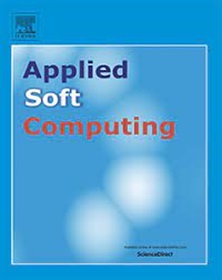Beyond training horizons: A physics-informed U-Net transformer for time-dependent CO₂ storage simulation in environmental applications
IF 6.6
1区 计算机科学
Q1 COMPUTER SCIENCE, ARTIFICIAL INTELLIGENCE
引用次数: 0
Abstract
CO2 geological storage is a key strategy for reducing greenhouse gas emissions, requiring accurate modeling of subsurface CO2 migration is essential for effective storage planning and risk assessment. Conventional numerical simulations, which solve time-dependent nonlinear partial differential equations, provide detailed physical insights but are computationally demanding, especially for large-scale or long-term scenarios. To improve computational efficiency, surrogate models based on machine learning have been increasingly investigated. Methods such as deep learning and physics-Informed neural networks aim to approximate the behavior of physical systems, offering potential reductions in simulation time. However, these approaches often require extensive case-specific datasets and are typically limited to fixed time horizons defined during training, which can restrict their generalizability and practical application. This study presents a time-aware surrogate modeling framework that combines convolutional neural networks with self-attention mechanisms to address these limitations. Drawing inspiration from autoregressive forecasting used in sequential learning models, the proposed approach captures temporal dependencies through iterative prediction of system states.The framework requires only a short-term numerical simulation to initialize the physical system, after which it can generate predictions for arbitrarily extended time horizons without the need for retraining. By enabling long-term forecasting, the method improves efficiency and supports repeated scenario evaluations, such as site screening and well placement optimization. Such predictive capabilities are particularly valuable in addressing environmental sustainability goals, where rapid and scalable simulations are essential for managing long-term subsurface processes under climate-related constraints.
超出培训范围:一种物理信息的U-Net变压器,用于环境应用中随时间变化的CO 2存储模拟
二氧化碳地质封存是减少温室气体排放的关键策略,需要准确的地下二氧化碳迁移建模是有效封存规划和风险评估的必要条件。传统的数值模拟解决了与时间相关的非线性偏微分方程,提供了详细的物理见解,但计算要求很高,特别是对于大规模或长期的场景。为了提高计算效率,基于机器学习的代理模型得到了越来越多的研究。深度学习和物理信息神经网络等方法旨在近似物理系统的行为,从而减少模拟时间。然而,这些方法通常需要广泛的特定病例数据集,并且通常限于训练期间定义的固定时间范围,这可能限制其泛化性和实际应用。本研究提出了一个时间感知代理建模框架,该框架结合了卷积神经网络和自注意机制来解决这些限制。从序列学习模型中使用的自回归预测中获得灵感,该方法通过对系统状态的迭代预测来捕获时间依赖性。该框架只需要一个短期的数值模拟来初始化物理系统,之后它可以在不需要再训练的情况下生成任意扩展的时间范围的预测。通过实现长期预测,该方法提高了效率,并支持重复情景评估,如现场筛选和井位优化。这种预测能力在实现环境可持续性目标方面尤其有价值,因为快速和可扩展的模拟对于管理气候相关约束下的长期地下过程至关重要。
本文章由计算机程序翻译,如有差异,请以英文原文为准。
求助全文
约1分钟内获得全文
求助全文
来源期刊

Applied Soft Computing
工程技术-计算机:跨学科应用
CiteScore
15.80
自引率
6.90%
发文量
874
审稿时长
10.9 months
期刊介绍:
Applied Soft Computing is an international journal promoting an integrated view of soft computing to solve real life problems.The focus is to publish the highest quality research in application and convergence of the areas of Fuzzy Logic, Neural Networks, Evolutionary Computing, Rough Sets and other similar techniques to address real world complexities.
Applied Soft Computing is a rolling publication: articles are published as soon as the editor-in-chief has accepted them. Therefore, the web site will continuously be updated with new articles and the publication time will be short.
 求助内容:
求助内容: 应助结果提醒方式:
应助结果提醒方式:


